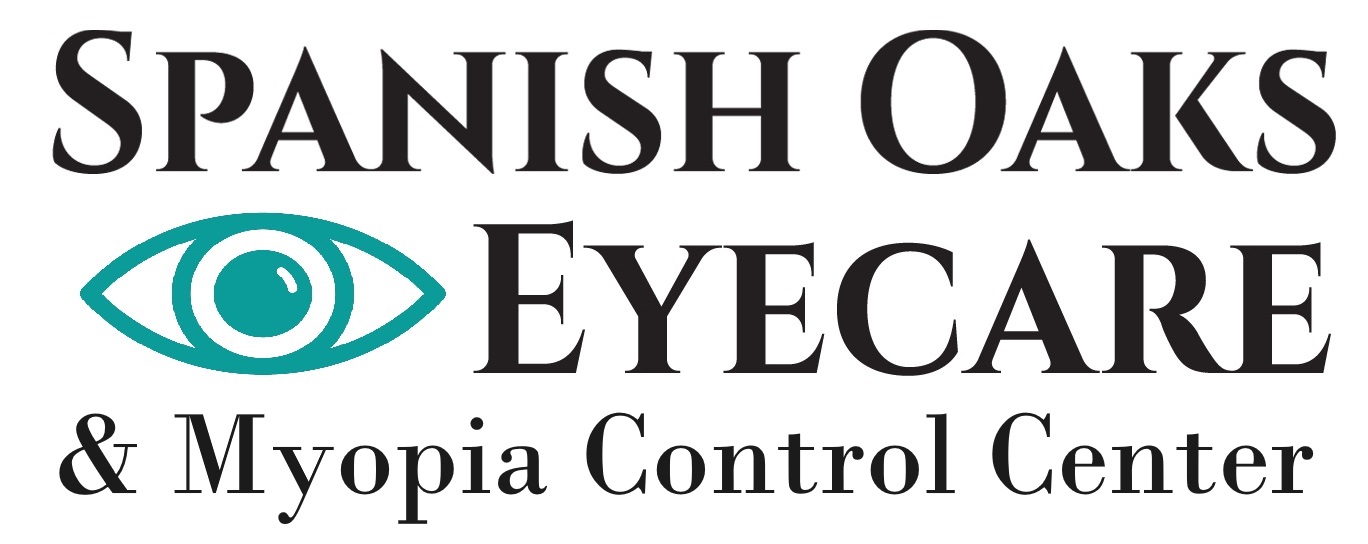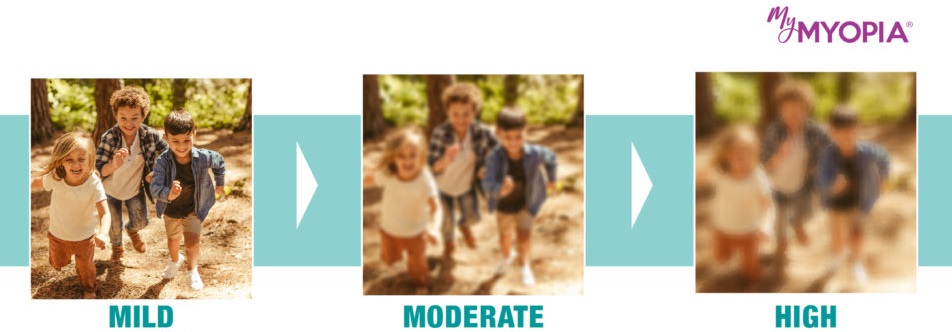
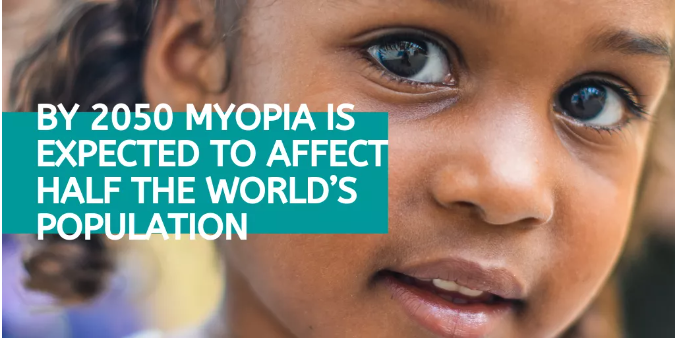
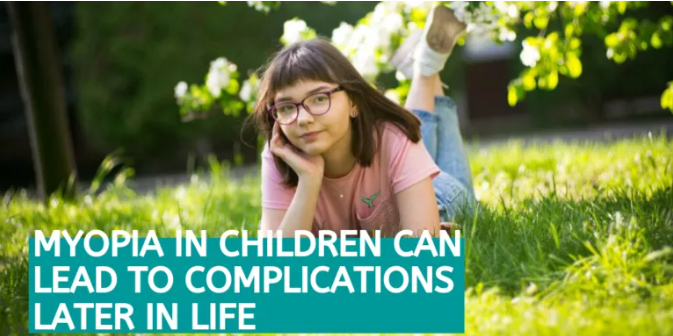
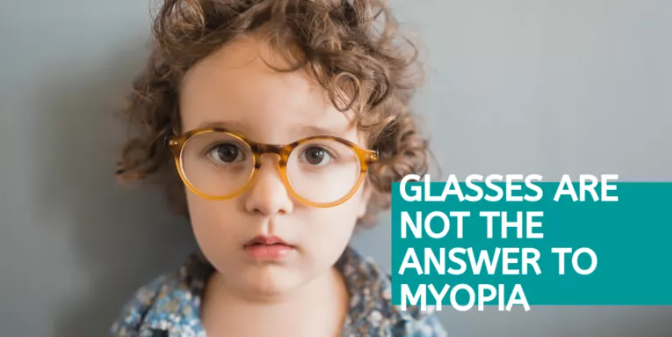
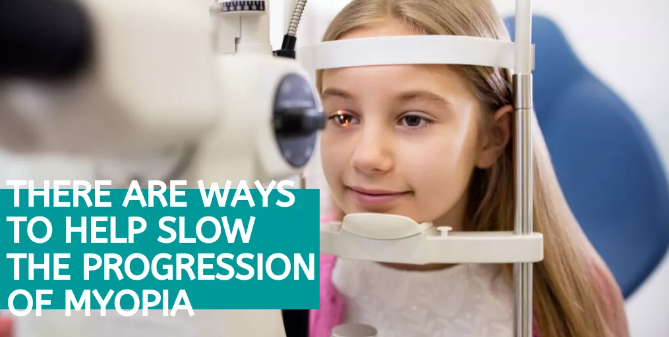
What is myopia?
Myopia – also known as near-sightedness or short-sightedness, is not just blurry vision far away. It is a problem of the eye growing too long. Higher levels of myopia carry a significantly increased risk of potentially blinding retinal complications.
Why is myopia a concern?
The rate of myopia is growing across the world, increasing from 22% of the world’s population in 2000 to 33% in 2020. Half of the world’s population is expected to be myopic by 2050!
Most myopia is caused by the eye length growing too quickly in childhood. When the eye gets longer (it’s axial length is higher), it stretches and puts pressure on the retina in the back of the eye. This delicate tissues is responsible for sending images to the brain that result in clear vision. When the retina stretches, it’s more prone to damage.
Excessive eye growth raises concern because even small amounts of stretching can lead to increased likelihood of vision threatening eye diseases in later life. For this reason, a child with myopia is significantly more likely to suffer from sight-threatening diseases and conditions like cataracts, macular degeneration, glaucoma and retinal detachment later in life.
There is no safe level of myopia!
Every Change in Eyesight Matters
While high levels of myopia increases the chances of vision threatening issues later in life.
Even lower levels of myopia can be associated with a higher risk of eye health issues. Every diopter (for example, a change in prescription from -2 diopters to -3 diopters) raises the risk of myopic macular degeneration, a sight threatening eye disease, by 67%!
What is axial length of the eye?
Normally, children are far-sighted after birth. In the first years of life, the eye grows until the focus falls on the retina. This is normal vision. Once this condition has been reached, they eye should stop growing. However, if the eye keep growing, near-sightedness happens.
Axial length measurements are an absolute necessity for proper diagnosis and treatment. Axial length is the distance from the front of the eye to the back of the eye and is measured in millimeters using a specific piece of equipment (at Spanish Oaks Eyecare we use the Myopia Master).
A normal axial (eye) length for an ADULT is 23 to 23.5mm, with males showing 0.5 mm longer eyes than females. If it gets to more than 26mm this greatly increases the risk of eye health issues later in life.
Is myopia going to get worse as kids get older?
Generally, myopia first occurs in school-age children. Because the eye continues to grow during childhood, it usually worsens until about age 20. However, myopia may also develop in adults due to visual stress or health conditions. The younger a child is when myopia starts, the faster it usually progress to higher amounts of myopia over time.
Once near-sightedness gets to -6.00 diopters OR the axial (eye) length gets to or goes above 26 mm, that person is considered to be extremely near-sighted.
Does screen time make myopia worse?
Although screen time is challenging to manage, especially with virtual learning, it impacts kids’ vision. School-aged children who spend 7+ hours per week or more using computers or mobile video games tripled their risk for myopia.
Is myopia hereditary?
There is a 25% chance that a child will develop myopia if one parent is myopic. That risk doubles to 50% if both are myopic.
Is spending more time outdoors enough?
Spending more time outdoors typically goes hand-in-hand with decreased screen time. Together these factors can support kids’ healthy vision.
How much time should children spend outdoors?
Spending time outdoors is important for both lowering the risk of a child becoming myopic and at lowering the risk of fast progression, or worsening, once a child is myopic.
Experts such as Dr. Gifford, a clinical optometrist and director of MyopiaProfile.com, recommend spending at least 90 minutes a day outdoors. This doesn’t have to be “active” time. It can be as simple as having breakfast outside. Increased time spent outdoors by children can slow myopia progression and may decrease the risk of new myopia onset by 50%.
What effect did COVID-19 have on vision?
The worry of myopia in children has increased even further with the rise of virtual learning and more time indoors due to COVID-19. The pandemic worsened the number of children at risk of nearsightedness.
Will wearing glasses make myopia (near-sightedness) worse?
Studies show that wearing an old/under corrected prescription can actually cause myopia to progress more quickly!
Regular eyeglasses or contact lenses do not treat the cause of myopia. They simply help the person see more clearly.
Specialized treatments are available for children who suffer from myopia.
